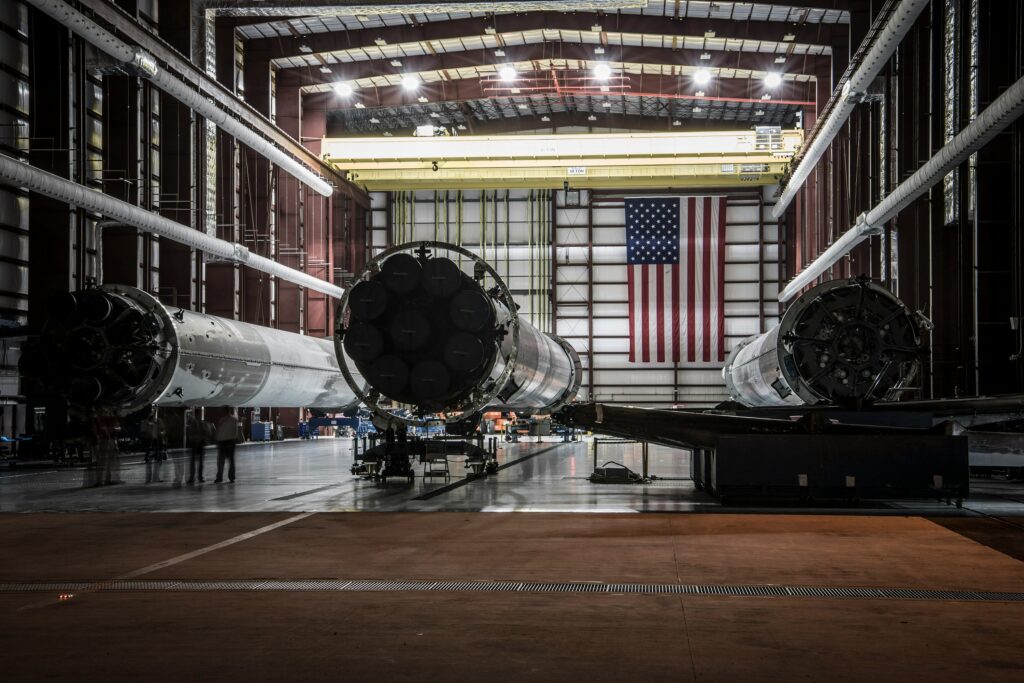Introduction
Some of our greatest technological breakthroughs have come out of defense contracts. From jet engines to plasma transfusions, small private-sector companies have a rich history of developing pivotal new technologies. Often developed initially for government use, many have ultimately revolutionized both the military and civilian markets. This synergistic relationship is fundamental to the Small Business Innovation Research (SBIR) and Small Business Technology Transfer (STTR) programs.
The SBIR and STTR programs provide funding and contracts to small businesses to develop technology that may be useful to specific departments and missions within the federal government. Small and large defense companies have a particular edge in securing funding through these programs as the Department of Defense distributes over one billion dollars annually on funding for its projects. This article will explore how these two programs work, and the general application process for each.
SBIR Summary
The SBIR program is designed to provide limited funding to small businesses that possess technologies that may have the potential to impact both commercial and governmental industries. The fund has a minimum annual budget of $3.2 billion and functions by allowing federal agencies to announce specific requirements they would like to see filled by private companies. These are posted on the SBIR website and interested companies can submit an application detailing how their technology could fill this niche. If proof of concept is documented and feasible, the agency then awards a contract to fulfill that specific need. Though various federal agencies participate in this program, the Department of Defense awards around 50% of the fund annually, which, for aerospace and defense companies, could be interpreted as a competitive advantage. Other participating federal agencies include NASA, The Department of Homeland Security, the Department of Energy, and many more.
The program awards can be subdivided into two categories, grants and contracts. Grants operate more flexibly, allowing more upfront investment and less binding agreements. These topics tend to be more broad to allow for more creative research solutions. Contracts on the other hand are much more specific and require more oversight by the agency overseeing the funding. This includes specific acquisition processes, highly specialized topics, and more fiscal oversight of the program. It is important to note that NASA, the Department of Defense, and the Department of Homeland Security only offer contracts for SBIR recipients.
Requirements
To qualify for the SBIR and the STTR program, you must be an American company with less than 500 employees and conduct your research within the United States. The program also requires the company to be actively involved in the research and development of new technologies, not just the manufacturing and production of “low-risk” projects that only need working capital. Though small-business applicants may partner with a larger, established company, 50% of the primary employment must be done through the small business. The program also allows up to 33% of the first phase to be subcontracted and up to 50% of the work requirement to be subcontracted in the second phase. Some agencies allow SBIR companies to be owned by venture capital firms, but some do not. To see the entire list of requirements, visit their website here.
STTR Summary
STTR is another program that seeks to stimulate American technological research by funding small businesses throughout the country. Though it still seeks to fund small businesses like the SBIR program, the STTR also focuses on developing non-profit research institutions as well. It does this by requiring applicants to partner with a research institution and distribute their workload between the participating entities. The STTR annual budget is less than the SBIR program but still boasts a minimum annual budget of $450 million annually. The STTR program emphasizes defense and aerospace development with the Department of Defense and NASA participating in the program. This program also presents a great opportunity to develop relationships and talent pipelines with amazing universities throughout the state. To read more about these programs, check out our blog post on local defense and aerospace programs here
This program also functions by distributing funds via grants or contracts, which may make the application process look different for each agency.
Requirements
The vast majority of requirements for the STTR program are mirrored by the SBIR program. These include being a business with less than 500 employees, basing your research out of the United States, and being an American-owned company. On top of these requirements, the STTR program requires that you do at least 30% of the work requirement with a non-profit research institution. This can include universities, research labs, and other organizations that meet certain criteria. The STTR program also requires that 40% of the work be carried out by a small business, but unlike the SBIR—it allows either the research partner or the small business to be the primary applicant. Critically, the STTR program prevents any venture capital ownership in its program. To gain additional information, please visit the FAQ section of the SBIR/STTR website here.
Program Structure
The application structure of the SBIR and STTR programs are the same, including the funding amount for each phase.
Phase I is a proof of concept phase that lasts anywhere from six months to a year. The process includes generating interest in a specific concept from within an agency, building blueprints, and outlining the scope and impacts of the project. This phase provides anywhere from $50,000-250,000 in funding.
Phase II is focused on prototype development and implementation and lasts 24 months. This phase usually builds off of previous requirements set by the sponsoring agency but with more specifications. This portion of the program is much more competitive as it significantly increases the amount of funding provided: anywhere from $500,000 to $1.5 million dollars throughout the project. Following Phase II, participants should have the capacity to manufacture and commercialize their project on a larger scale.
The final phase is large-scale commercialization. Though officially a part of both the SBIR and STTR programs, there is no additional funding provided to a company that has entered this phase. This portion of the program usually results in long-term contracts signed by sponsoring federal agencies and wide-scale private commercialization.
Help with Applying and Funding
Though these avenues of funding seem enticing, the application and reporting processes are often bureaucratic and difficult to navigate—especially without prior experience. Thankfully, there are a multitude of local and national firms dedicated to helping you navigate this process.
LSI
LSI is a consulting firm based out of Utah that specializes in crafting applications to help its clients secure funding through a multitude of different federal programs. For over 50 years, the LSI team has been a trusted resource to small businesses, Fortune 500 companies, federal agencies, and state and municipal entities. They deliver innovative and cutting-edge solutions that solve complex business, economic, social, supply chain, and logistics challenges across all levels of government, and industry, for our diverse client set.
The firm has secured over $470 billion in contracts for its clients throughout its five decades of operation. The firm has deep connections with Utah and serves as a major advocate for the Governor’s Office of Economic Opportunity and Utah Workforce Services. LSI also offers consulting services in supply chain management, social impact, economic development, and business development.
LSI can be a critical advocate for any company attempting to secure funding for an aerospace and defense project. To learn more about LSI, visit their website here.
APEX Accelerator
APEX is an organization established by Congress in 1985 to serve as a conduit for local businesses and the Department of Defense. The organization provides a variety of services that focus on helping businesses get into defense contracting, including helping businesses get registered into DoD databases, identifying different departments that may be interested in a specific project, assisting with grant applications, helping companies with audits following receiving a reward, and much more.
APEX can help you navigate the complexities of applying for SBIR and STTR grants and contracts. To find out more, visit their website here.
Utah Innovation Center
The Utah Innovation Center, housed within the Governor’s Office of Economic Opportunity, is a free resource for Utah-based companies interested in pursuing SBIR/STTR opportunities at the 11 federal participating agencies. For 15 years, the Center has supported Utah small businesses with proposal assistance and review, training and workshops, checklists of required tasks, and templates and samples. The Center now offers microgrants and nonrecourse loans through the Utah Technology Innovation Funding (UTIF) program, and a commercialization cohort for SBIR/STTR companies.
Team members have science, technology, and business expertise and are available to consult and assist any Utah company. The Center has been instrumental in helping Utah companies push above their weight in these programs. In 2021, 80% of the dollars coming to the state were from current and former clients of the Center. To find out more, please visit the Innovation Center website.




